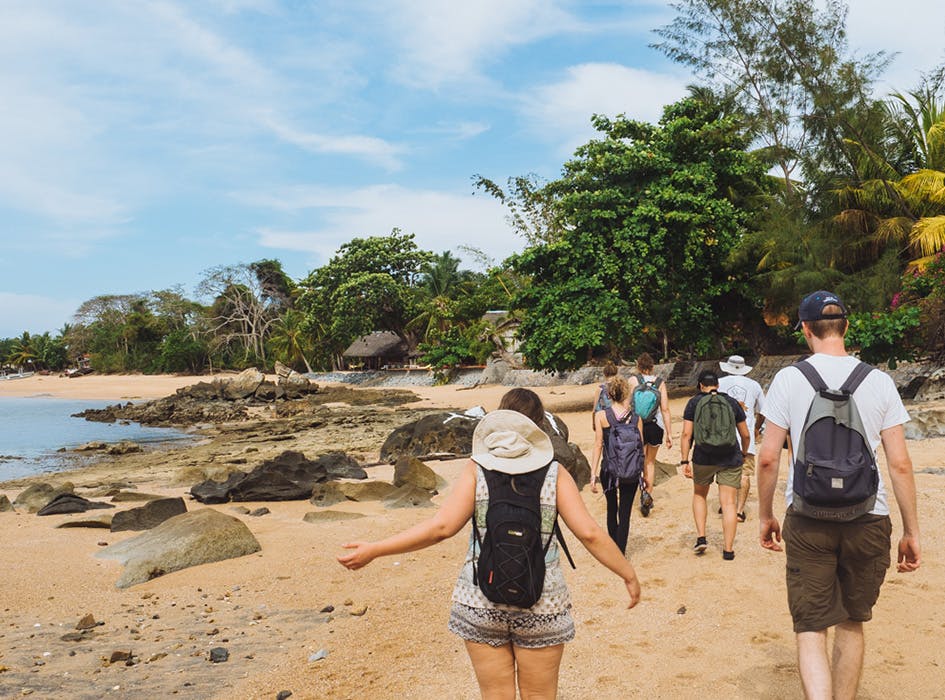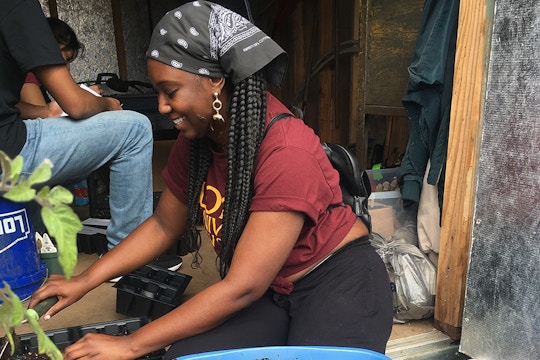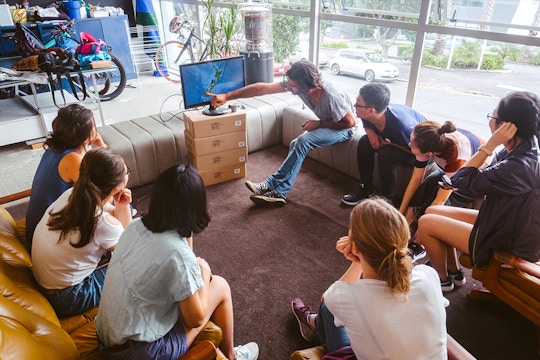
Island Outreach by Boat Volunteer Project in Madagascar
Want to see Madagascar by boat while making a difference as an Island Outreach volunteer? International Volunteer HQ’s Island Outreach project is an incredible 7-day over-water trip where volunteers visit and stay on a number of Madagascar’s beautiful, remote islands and contribute to a wide variety of initiatives that serve local rural communities and the environment.
Highlights:
- Programs start every first and third Monday of the month
- Affordable set fee of CA$831 for 7 days
- Includes accommodation, meals, airport pick up, orientation and 24/7 support
-
Travel on a 50ft boat to make a difference to remote communities
-
Experience the gorgeous, secluded islands of Madagascar
-
Stay with other volunteers in beach houses, huts and rustic camps
Key information
This program is ideal for:
What to expect and how you'll make an impact
The Madagascar Island Outreach project offers volunteers a chance to participate in a 7-day island tour. You will spend the week visiting and staying on four different islands enjoying everything the beautiful scenery offers as well as a great variety of volunteer tasks that make a difference to people and animals that live away from the mainland.
The trip takes place aboard a 50ft research vessel. You’ll spend your days visiting several of Madagascar’s remote islands and villages, and your nights in rustic camps. A key focus of the trip is rural community outreach to villages with limited and basic resources. Activities include:
- Beach and reef clean-ups
- Education support
- Small construction projects
- Donation distribution
- Help with scientific research on forest hikes
- Snorkel surveys
- Beach patrols
These activities all help contribute to the ongoing efforts of IVHQ’s Marine Conservation, Forest Conservation, Teaching, Turtle Conservation and Community Development projects in Madagascar.
You’ll also have a good amount of free time to explore tropical islands, snorkel in the turquoise waters or enjoy a fun game of beach soccer with the village children.
Your itinerary is weather-dependent, and while the project will generally follow a set itinerary volunteers do need to be flexible if this needs to change.
Why do Island Outreach volunteering in Nosy Komba with IVHQ?
As an Island Outreach volunteer you’ll be adding value to the local community, while also developing personally and professionally by:
- Contributing to a number of local initiatives that serve the community
- Help improve infrastructure and education on remote islands
- Developing your communication skills
- Gaining volunteering experience
- Immersing yourself in Malagasy culture
- Discovering the breathtaking islands of Madagascar
Volunteer requirements
- A good level of physical fitness and agility is required to join the Madagascar program
- Volunteers aged 16-18 must be accompanied by a parent, guardian or friend over the age of 18 to participate in this program
- All volunteers are required to provide a criminal background check to IVHQ prior to departure. Those aged 16-17, if unable to obtain a criminal background check, can provide two character reference letters instead
- All volunteers are required to have adequate volunteer travel insurance
- All volunteers must speak fluent English
- While fluency in French or Malagasy is not a prerequisite, we recommend volunteers learn some basic words and phrases as this will help immensely with day-to-day volunteer work and communicating with local people.
Not sure which program to join?
Madagascar photo gallery




















Academic course credit
Gain course credit from your college or university and meet your academic requirements when completing a volunteer abroad program with International Volunteer HQ!
Learn about course credit”If you're thinking about going, go. Don't think too much, you won't regret it.”
Read reviews from Island Outreach volunteers in Nosy Komba
See more reviews
Location
The Island Outreach project is based on a 50ft boat which travels between remote islands and bays off the north-west coast of Madagascar. You’ll get well off the beaten track with the unique opportunity to visit Nosy Mamoko, Ampoagna, Russian Bay and Nosy Tanikely.
Nosy Mamoko: This small unique island is situated at the southwest end of the greater Ampasindava Bay and is still ruled by a Queen. The pristine unspoiled forest canopy ends on white sandy beaches where you will often see wild lemurs and a 100-year-old tortoise play amongst the palm trees.
Ampoagna: A small village located on a pristine long, white, sandy beach flanked by tall pine and coconut trees. The beach is also a nesting spot for turtles and is where the Turtle Conservation project is based.
Russian Bay: An area steeped in history dating back to the Russo-Japanese war of 1905, when a Russian warship anchored in the bay. Instead of attacking passing Japanese ships as instructed, the crew enjoyed Madagascar so much they decided not to wage war or to return to Russia. The ship was kept hidden, but emerged twice to trade with pirate vessels in the Mozambique Channel. It finally sank years after running out of fuel. The last of these Russian sailors died in 1936 and their graves can still be visited today.
Nosy Tanikely: In the ocean south of Nosy Be is the island of Nosy Tanikely. On it, the Nosy Tanikely Island Reserve is famous for its pristine beach, incredible snorkelling and crystal-clear waters.
Arrival and orientation
The program orientation begins on the first and third Monday of every month. Volunteers need to arrive in Nosy Be on the Sunday before their project starts.
After you have registered for the program, please book your flights to arrive in Madagascar. There are two options for flying to the Madagascar program. Fascene Airport (NOS) in Nosy Be is the most convenient for an airport pick-up, however, flights to Nosy Be are limited and often more expensive than flights to Ivato Airport (TNR) in Antananarivo. Some volunteers choose to fly to Antananarivo and take a connecting flight or overnight bus (and boat taxi) to Nosy Be. If you choose this route and are catching the bus the day you arrive, you will be met at the airport in Antananarivo by an associate member of our local team, who will assist you in catching your onward transport. There is a CA$28 surcharge for this service. If you want an easy arrival, we recommend flying to Nosy Be. However, if you are on a budget and do not mind catching the overnight bus from Antananarivo to Nosy Be then flying to Antananarivo may be the preferred option for you.
There is also the option of private overland transport from Antananarivo to Nosy Be. The cost of this depends on how many volunteers are sharing the transport and if you choose the 2-day transfer or the 4-day tour. Please contact your Program Manager for more information on these options.
If flying into Fascene Airport (NOS) in Nosy Be you will be greeted at the airport by a member of the local team.
Island Outreach volunteers will spend the Sunday night on Nosy Be, at their own expense, before starting the program by meeting at the Oasis Coffee shop in Nosy Be, at 9:00 AM on Monday morning. Once the group has gathered, transport will take volunteers to the Centre National de Recherches Océanographiques (the Oceanographic Research Institute of Madagascar) where volunteers will receive a short introduction to marine conservation by one of the institute’s leading Malagasy marine researchers. This is followed by a fascinating tour of the marine museum, which has a large collection of specimens covering all aspects of marine life and its evolution in Madagascar. Next, volunteers head to the port to join Spirit of Malala around noon. Shortly after arriving on board, volunteers will receive a safety briefing and local lunch. After lunch the boat will head to Nosy Mamoko, the first of the stopover points. The journey to Nosy Mamoko usually takes around 3 hours.
Volunteer schedule example
It’s important to be flexible around the order of stops during the trip and to expect volunteer tasks to vary according to the research being undertaken at the time, as well as the needs of the various communities.
Your itinerary is weather-dependent, but the project will generally follow the itinerary below:
Nosy Mamoko Island: Volunteers undertake a number of activities during their two-day stay on Nosy Mamako which can include construction projects, beach clean-ups, snorkelling for plastic waste, English classes and cultural interaction with the islanders. Leisure activities include a visit to a beautiful waterfall and swimming. You’ll be staying in tents under a grass canopy on the beach for two nights before moving on to Ampoagna which is three hours away.
Ampoagna: In Ampoagna volunteers will assist with the construction of the new school by making bricks and helping with general construction. Previous volunteers have already successfully constructed a clinic and water well. Volunteers also teach English to local children and conduct beach clean-ups. Leisure activities include swimming and playing soccer with the local villagers. Accommodation is in beach houses with Western-style bathrooms. Volunteers will stay on Ampoagna for three nights before making the move to Russian Bay, approximately a one and a half hour journey away.
Russian Bay: Volunteer activities mainly focus on beach clean-ups and removing plastic from the many inlets, hidden beaches and bays. Leisure activities include a beach bonfire on the last night, swimming and a forest walk. You’ll stay in tents on the beach for one night before heading off to Nosy Tanikely, a trip which takes about three and a half hours.
Nosy Tanikely: Volunteers enjoy a short three-hour stopover at the end of the program to relax and enjoy the sun or visit the lighthouse and local lemur population.
Volunteers will travel back to Hellville after visiting Nosy Tanikely, approximately a one-hour journey, and arrive in Helville around 4pm on the Sunday afternoon.
Accommodation and WiFi
Volunteers on the Island Outreach project should expect accommodation to be a mixture of beach houses, huts and rustic camping in tents during the 7 day journey. The 50ft Spirit of Malala boat which you’ll travel on is fitted with flush toilets and showers. You are required to bring your own light sleeping bag, sleeping roll mat, pillow, pillowcase and bath/beach towels. For volunteers on the Island Outreach project there will be no WiFi during the trip, however there is often cellular reception.
Meals
Volunteers on the Island Outreach project will be served three meals per day prepared in the traditional Madagascan style by the onboard chef.
Meals are basic, but nutritious and tasty. Breakfast ranges from pancakes to eggs or bread with condiments. Lunch is rice or pasta based, and dinner is rice based. Both lunch and dinner will usually be either chicken, zebu (beef) or fish, all with vegetables, beans and sauce. Supplies in Madagascar are limited and meals will change seasonally depending on the ingredients available.
Depending on the location, volunteers will eat most of their meals onboard or in some cases at local diners. Volunteers will have the opportunity to purchase snacks on Nosy Be before their departure too.
Please note that the local team is not able to cater for special dietary requirements or requests and meals are usually carbohydrate heavy. You should not expect to eat as you normally do at home and there is the need to be flexible or prepared to supplement the food provided.












Pricing
Due to its unique nature, the Island Outreach project has a stand-alone Program Fee of US$590 which includes meals, accommodation, transport, tents and any resources or materials needed for project work.
Check what's required to visit Madagascar
Check out the widget below to find out what the Covid-19 restrictions and visa requirements are for Madagascar, based on your country of residence.

Safety and support
IVHQ follows best practice and industry-leading health and safety procedures, which are regularly reviewed and optimized as part of the B Corporation recertification.
- All volunteers encouraged to complete our interactive pre-departure training.
- All local teams trained on best practice volunteer management & First Aid.
- All IVHQ programs are required to adhere to IVHQ's Risk Management Policy.
- All volunteers have access to 24/7 in-country support from our local team.
Essential country information
| Capital | Antananarivo |
| Population | 26.97 million |
| Languages | Malagasy and French |
| Currency | Malagasy Ariary (ARA) |
| Time zone | UTC+03:00 |
Weather and climate
The climate of Madagascar varies due to the topographic differences and trade winds from the Indian ocean. Typically the climate is tropical along the coast, temperate inland and arid in the south. There is a wet, warm season from November to April with most rainfall covering the eastern coast. There is a cooler, dry season from May to October. Temperatures fall between an average of 18°C (64°F) to 30°C (86°F) throughout the year, with the lowest temperature dropping to 12°C (54°F) and highest reaching 36°C (96°F).
Latest blog posts
Other projects you may be interested in



































